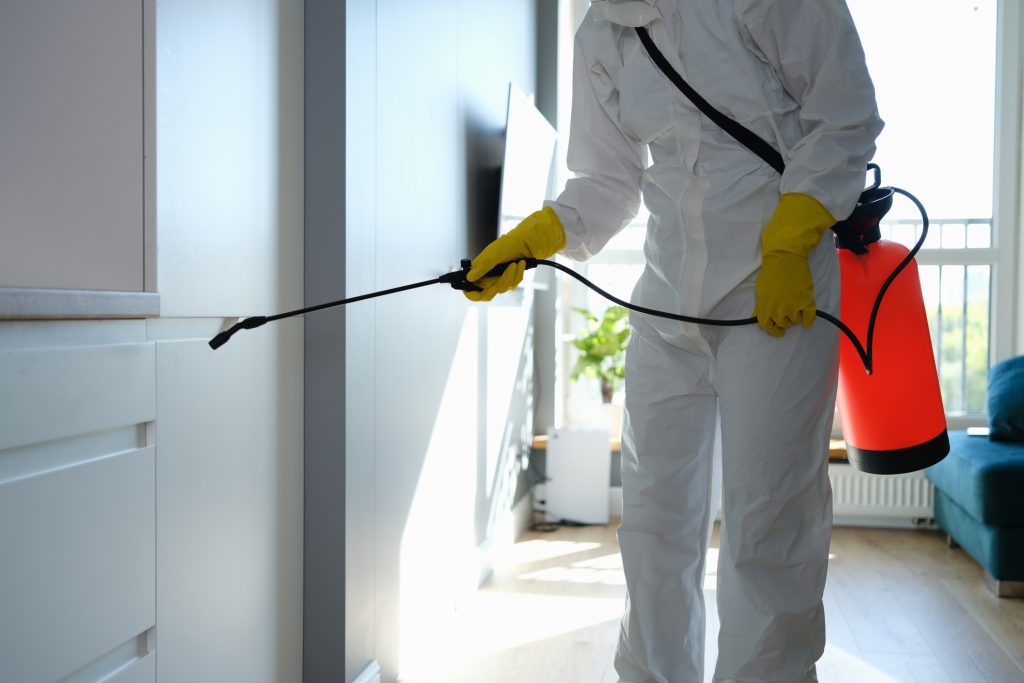Experience professional Pest Control for complete protection and eliminate infestations.
Eco-Friendly Pest Control Approaches for Handling Wild Animals in Urban Locations
Urban locations usually find themselves at the junction of human task and wildlife, leading to unique obstacles in bug monitoring. These strategies not only shield the setting yet likewise boost neighborhood interaction in wildlife administration. As city populaces proceed to grow, comprehending the dynamics of wild animals interactions becomes significantly essential.
Recognizing Urban Wild Animals Dynamics
Understanding Urban Wild animals Characteristics is crucial for developing reliable and environment-friendly insect control strategies. Urban areas are increasingly becoming environments for various wild animals types, driven by aspects such as environment fragmentation, food schedule, and human encroachment. Recognizing these dynamics enables a nuanced technique to pest monitoring that aligns with eco-friendly concepts.
Urban wild animals often consists of varieties such as raccoons, squirrels, and birds, which adjust to city settings, discovering niches in green spaces, parks, and also residential areas. Their existence can bring about problems with humans, specifically when they manipulate human resources for food and sanctuary. Comprehending the habits and eco-friendly duties of these species informs techniques that reduce adverse communications while advertising biodiversity.
In addition, recognizing the interdependencies within city ecological communities helps in recognizing vital locations for habitat preservation and repair. This understanding adds to the growth of integrated parasite monitoring (IPM) techniques that consider the ecological balance, therefore minimizing dependence on harmful chemicals. By cultivating conjunction in between human beings and urban wildlife, cities can develop healthier atmospheres that profit both homeowners and local ecosystems, leading the way for sustainable city living.
All-natural Repellents and Deterrents
Natural repellents and deterrents supply a sustainable alternative to conventional parasite control techniques by utilizing the power of nature to keep undesirable varieties at bay. These eco-friendly remedies typically use plant-based ingredients, vital oils, and various other normally occurring substances that discourage parasites without hurting the setting.
One effective natural repellent is peppermint oil, which is known to repel rats and pests. Its strong fragrance is unpleasant to numerous bugs, making it a prominent selection for urban setups. Likewise, vinegar and citrus peels can work as deterrents, as their strong odors are generally unattractive to numerous wild animals.
Furthermore, diatomaceous earth is a natural powder that can be spread in locations prone to pest task, effectively drying out and preventing bugs without presenting threats to non-target varieties. Additionally, garlic sprays and neem oil are acknowledged for their capacity to drive away a vast array of pests, consisting of both pests and bigger wild animals.
Implementing these all-natural repellents not only lowers reliance on chemical pesticides but additionally promotes a healthier urban ecosystem, fostering a much more well balanced conjunction in between humans and wildlife. By using these approaches, urban areas can successfully handle pest populaces while minimizing environmental effect.
Habitat Alteration Techniques
Effective environment adjustment strategies play an essential duty in sustainable parasite monitoring by changing the atmosphere to make it less helpful to pest infestations. By comprehending the ecological dynamics of city areas, homeowner can apply tactical modifications that deter parasites while advertising biodiversity.
(Home pest control Port Charlotte)One primary method involves keeping proper hygiene. This consists of routine waste elimination, protecting trash can, and getting rid of standing water to reduce breeding sites for insects and rats. In addition, landscape design practices such as picking indigenous plants can enhance ecological balance, offering environments for useful microorganisms while reducing sources for insects.
An additional crucial approach is to seal entry points in buildings. Evaluating and repairing cracks in structures, wall surfaces, and home windows can dramatically reduce parasite accessibility. In addition, developing physical barriers, such as fencings or plant buffers, can prevent wildlife activity right into human-inhabited locations.
Integrated Parasite Administration Practices
Building upon habitat adjustment methods, integrated bug administration (IPM) practices use an all natural strategy to managing bug populaces while reducing ecological effect. IPM incorporates numerous approaches, including biological, cultural, mechanical, and chemical controls, to achieve reliable insect management.
Organic control entails the introduction of all-natural predators or bloodsuckers to reduce pest populations. Cultural practices, such as crop turning and sanitation, interfere with pest life process and reduce their environments - Pest control service. Mechanical controls, like catches and obstacles, supply prompt remedy for insect stress without chemical treatment
Chemical controls are used as a last option, concentrating on targeted applications that restrict damage to non-target species and the environment. The option of eco-friendly pesticides, when necessary, is essential to learn this here now the IPM structure. Furthermore, monitoring insect populaces and evaluating prospective damage aids educate decision-making, making certain that treatments are prompt and reliable.
Neighborhood Involvement and Education

(Flea control Port Charlotte)Workshops and informational sessions can gear up residents with expertise about native species, habitat conservation, and efficient non-toxic parasite administration methods. Cooperation with colleges, local companies, and government companies even more enhances educational outreach, making certain that vital information gets to diverse audiences.
Additionally, community-led campaigns, such as community clean-up days and habitat reconstruction jobs, not just advertise biodiversity yet likewise reinforce area connections. Pest Control. By motivating residents to share their experiences and monitorings, neighborhoods can establish targeted methods that deal with certain local pest problems
Integrating feedback from residents right into parasite administration prepares makes it possible for a much more responsive and adaptive approach to wild animals obstacles. Eventually, notified and engaged neighborhoods are essential to accomplishing long-term success in environmentally friendly parasite control, bring about healthier metropolitan atmospheres that respect both human and ecological requirements.

Verdict
In verdict, environment-friendly pest control approaches deal sustainable solutions for taking care of urban wild animals. By prioritizing environment adjustment, making use of all-natural repellents, and applying integrated bug monitoring methods, neighborhoods can promote an unified coexistence with regional animals.